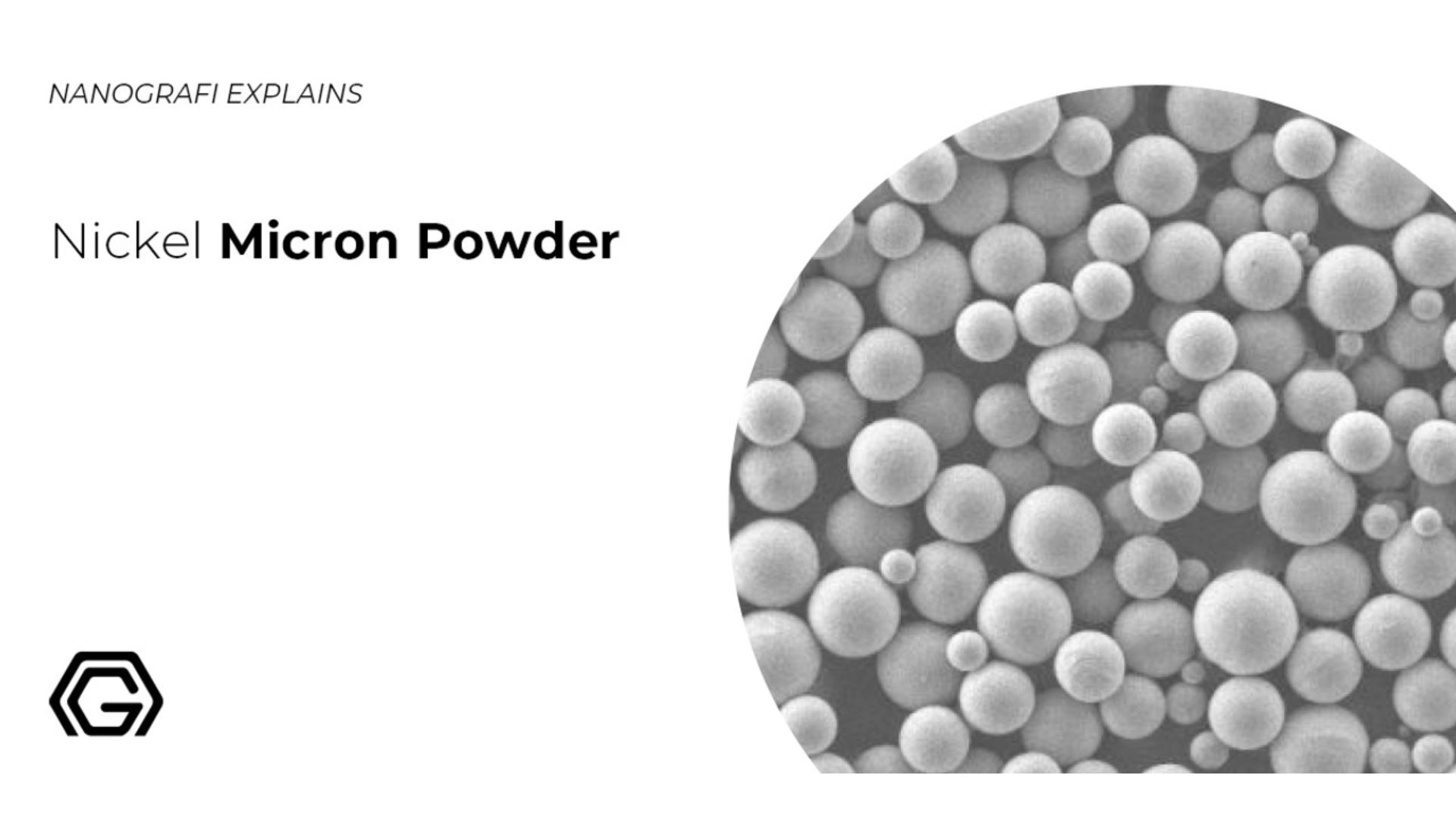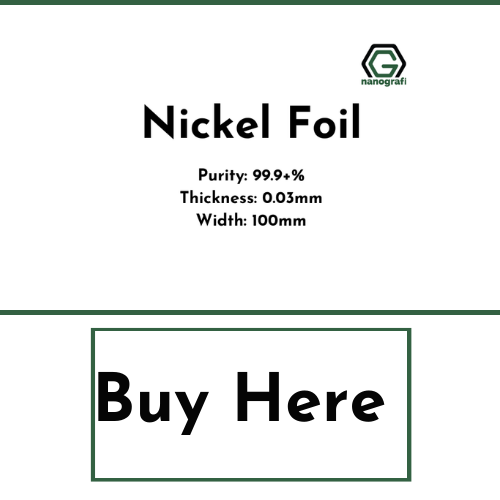Explained: Nickel Foils and Their Applications
Nickel is one of the elements in the periodic table with symbol Ni and atomic number 28.
It's a subtly golden hue of silver-white metallic element. It is one of the transition metals that is ductile and rigid. The reactive surface of pure nickel powdering shows significant chemical activity but sections that are larger react gradually with the air under standard conditions as an oxide surface layer is formed, thereby preventing increased corrosion.
Introduction
Nevertheless, in the earth's crust pure nickel is present only in small quantities, typically in the ultramafic rocks and inside the large meteorites of iron-nickel which, outside the atmosphere of the planet, were not exposed to oxygen. Nickel foil a very thin sheet of nickel typically made with a machine that is used for rolling mills. It is usually reduced into leaf-like substance by beating or rolling it mechanically. Nickel had varieties of industrial applications which include: Production of batteries, production of cell phones, production of electric bikes, production of bicycles, production of telecommunication gadgets, etc. This article describes the background, property, and application of Nickel.
Characteristics of Nickel
Nickel is a smooth, mixable, and ductile alloy, that is silver-grey. It conducts electricity greatly and conducts heat as well. The formation of various corrosion-resistant alloys is incredibly useful. It also has battery and electroplating applications in its metallic form. The nickel plate is employed, especially in coinage, as a protective cover for other metals. Nickel is can be in different forms such as foil, wire, mesh, and rod by Advent Testing Materials Ltd. Foil, board, tube, isolated cable, and rock form are also provided with the nickel alloys.
Nickel is applicable in the production of Security tags, Aerospace industry, Industries whose operation involves heating of elements, the printing of resistors, and circuit boards. It is also used in the production of hydride batteries of nickel-metal, lithium batteries, the power tool of poles, batteries of polymer, electronic industries, computers industries, cordless electric tool, bicycles (electric type), bikes (electric type), telecommunication industries, electric vacuums, unique lights.
Nickels are generally used for the following in synthetic chemistry: Graphene foil of high quality can be produced with a fast deposition of the thermal chemicals by nickel foil; a nickel foil can be used as a substrate for the manufacture of piezoelectric thin foils of Pb (Zr, Ti)O3; and nickel oxide nanowires synthesized with nickel foils after being immersed in a lithium-hydroxide solution. Manganese dioxide is usually also used by electrodepositing it on a nickel foil for thin ultracapacitor film fabrication.
Nickel foil, as already defined above, is a very thin sheet of nickel typically made with a machine that is used for rolling mills. Nickel foil also has varieties of applications in our daily life – both technology industries and biological advantages. We will vividly look into those applications in the article and they will be briefly explained.
Background of Nickel Foil
Before ores of nickel used to be effortlessly confused with silver ores, it is relative of recent that understanding of the metal and its uses become easier. Nickel has, however, anciently been in use unintentionally thinking it was silver since almost 3500 BCE. Bronze goods from a country that is now known as Syria contain up to 2% nickel. Some old manuscripts of Chinese indicate that within 1700 to 1400 BCE, whitish copper also knowns as cupronickel was majorly used. The white Paktong copper was already shipped to Great Britain in the 17th century, but it was not until 1822 that the contents of nickel were discovered. The kings of Agathocles Bactrian, Euthydemus II, and Coins of the nickel-copper alloy was the force behind the production of nickel-copper alloy coins. In the second century, Pantaleon also enforces the production of copper-alloy nickel in the cupronickel of Chinese.
Nickeline (or Niccolite)
A red ore, which resembled copper ore, was discovered in medieval Germany in the Erzgebirge (Ore Mountains). When miners could not remove copper from the iron, they accused Nickels (like Old Nick), a strange creature of German folklore, of besetting the metal. They named the German copper mine Kupfernickel for copper. Nickel is also generally known as nickel arsenide. In 1751, in a cobalt mining station in the village of Los in Sweden, Baron Axel Fredrik Cronstedt tried to extract copper from copferickel and created a white metal which he named for the spirit that had called it, nickel. Silver nickel or copper-nickel was named in Modern Germany. Kupfernickel which is also known as Kupfer-Nickel designated the cupronickel alloy.
In the beginning, Kupfernickel that was not widely distributed was the only source that nickel was usually generated. Starting from 1824, nickel became a byproduct of the blue production of cobalt. The world began to smelt Nickel on a large scale in Norway in the year 1848 from nickel-rich pyrrhotite. The demand for nickel increased due to the ultimate nickel’s introduction to the production of steel in the year 1889, and the deposits of nickel of New Caledonia which was discovered in 1865 served as the primary provider of the world's most prominent supply from 1875 to 1915. The inception of the big deposits in the Basin of Sudbury, Canada in the year 1883. Other places that made large production of Nickel possible are Norilsk-Talnakh in Russia (1920) and Merensky Reef in South Africa (1924).
Properties of Nickel Foil
Nickel (Ni) is a chemical element that is located in group 10 and period 4 of the periodic table. It shares period 4 with other elements that are important biologically such as potassium (K), calcium (Ca), Manganese (Mn), Iron(Fe), Cobalt (Co), Nickel (Ni), etc. Nickel belongs to block d, it is solid at (room temperature) 20°C, the resistivity of Nickel is 6.97 μΩ-cm at 20°C, its boiling point is 2732°C, its melting point is 1453°C, and its density is 8.9 g/mL at 25 °C. It is whitish with a spark of gold not noticeable in it. If engineers or technicians in the industry beat nickel into a thin leaf-like substance at room temperature, the resulted product is known as Nickel foil. This nickel foil is ductile, hard, smooth, exceptional luster, weldable, conduct heat and electricity properly, resistant to erosion, resistivity is low, has high drawing tension and it is mixable.
To get more information about nickel micron powder,
you can read our blog post here.
Applications of Nickel Foil
Graphene films of high-quality can be extracted on nickel film through quick precipitation of the heating chemical vapor, nickel foil can be used as a substructure for the development of Pb(Zr, Ti)O3, the use of the nickel nickel-oxide nanowires after soaking in lithium hydroxide solution, the use of manganese dioxide as electrodeposits. The nickel foil usually undergoes a process of electro-deposition required for processing material which is extremely fine, which is much larger than conventional rolling processes. It gives a very versatile product for a specific project and part implementations.
This kind of electroformed nickel foil has various attractive characteristics, including a high chemical content, excellent surface finish, strong engraving properties, and moderate nickel base corrosion and strength.
This exceptional nickel film can be made only by skilled producers with modern technology, and it is a spot on the market where full accuracy is expected of the materials used. Here we look at five applications that take advantage of their special nickel foil characteristics.
Mesh of Battery
Many of us use battery mesh for daily usage, so it is no reason to continually invest in and improve battery technology. The battery-producing materials must always be maintained to a high quality. Battery technology uses fine foils that give certain characteristics to battery architecture and nickel foil an excellent option it is resistant to corrosion – this shows that it can be used for different ranges of battery installation.
Printed Resistors or Printed Circuit Boards
Printed circuit boards (PCBs) are the core of most mass-manufactured electronic products, with the greatest requirement for smaller technologies progressively and many layers being set up to fit as many of the parts in narrower spaces as possible. In this field, nickel is used because it is so ultrathin, helps save energy, offers protection against corrosion, and is conductive naturally.
Heating of Elements
The nickel foil typically has high-purity nickel (more than 99.7 percent nickel), which ensures that it preserves the properties of the pure element, including its excellent corrosion resistance and also its ability to endure high temperatures and stay solid. This is used to manufacture high-specification heating elements, due to its high resistance to the movement of energy combined with its heat resistance.
Aerospace
Innovative new approaches to create components are constantly evolving and discovering in the aerospace industry. Weight is also necessary and this film is small, but can also be manufactured to fit projects of this sort in wide width. It maintains good traction resistance, which is another essential element for aerospace use. This is also used for security and military purposes.
Use in Tags of Security
It is easy to overlook small items, but a security tag is packed with technology, and it is another area where nickel foil is used. Nickel foil has underlying properties of the magnet which are important to the development and evidence of solid but versatile small tags. Security tags are continually being updated to work better, and the new materials are still needed.
Other applications of nickel are, but not limited to, the following:
- Nickel-metal hydride batteries
- Lithium battery
- Polymer battery
- Portable computers
- Cell phones
- Electronics industry
- Pole power tools
- Cordless electric tools
- Electric bikes
- Telecommunications
- Other industries
- Power Generation
- Solar and Alternative Energy
- Electric vacuum
- Special lights
- Medical
- Electric bicycles
- Automotive
Conclusion
Nickel is a chemical element with very prominent properties in our day to day activities which can never be overemphasized. Nickel foil, on the other hand, is formed when nickel undergoes various mechanical machining processes such as beating rolling, etc. From the applications of nickel discussed above, it can easily be deduced that Nickel is an all-rounder in technological industries. Without it, technology will undisputedly and drastically suffer degradation. Nickel is not only advantageous in technological industries but also biological industry because it is among the period 4 elements that house biologically important elements like Calcium (Ca), Potassium (K), Manganese (Mn), zinc (Zn), iron (Fe), cobalt (Co), copper (Cu), etc.
To get more information, you can visit Blografi.
References
https://www.advent-rm.com/en-GB/Products/Pure-Meta...
https://cutt.ly/BXG9nU2
https://cutt.ly/yXG9iLE
https://cutt.ly/hXG9gLJ
https://www.corrotherm.co.uk/blog/5-applications-o...
https://en.wikipedia.org/wiki/Nickel
Recent Posts
-
Advanced Materials for Unmanned Aerial Vehicle (UAV) Protection Against Laser
Consider a UAV on a critical mission, rendered inoperative by a sudden laser attack. With the increa …26th Jul 2024 -
Simulation and Modeling of Material Properties
Our world is composed of a dazzling array of materials, each with its own unique properties that dic …19th Jul 2024 -
Advanced Coatings for Superior Corrosion and Wear Resistance
Corrosion and wear pose significant challenges across various industries, leading to substantial eco …12th Jul 2024







